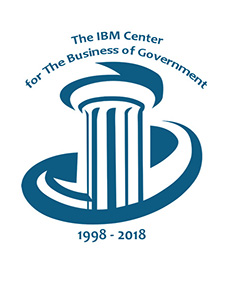
The Role of Artificial Intelligence in the Future of Government

This parallels the goal of many public administrators -- to create reliable, repeatable administrative processes. This could be done via the emerging technologies associated with artificial intelligence, but Tom Davenport and Julia Kirby write in a recent book about AI that: “The moment a realm of intellectual activity is codifiable, it ceases to be uniquely human.”
So, what does this portend for the work of government employees in the future? The IBM Center – as part of its 20th anniversary activities this year – is looking twenty years ahead. It recently held the second in its series of “Envision Government in 2040” sessions, with this session focusing on the potential impact of artificial intelligence on government operations (the first session focused on the future of work in the public sector). This small group session found itself initially focused on the barriers to the use of AI, but eventually began to highlight potential future uses in government operations.
Using AI in Government. A recent IBM Center and Partnership for Public Service report on the use of AI in government today highlights several specific case studies, such as the Bureau of Labor Statistics’ pioneering use of AI to help relieve its employees of tedious, repetitive tasks related to assigning codes to particular survey responses from businesses on workplace injuries. By automating the coding process, the Bureau was able to “improve the quality and efficiency of the coding task,” according to the report. Instead of employees memorizing codes, they were then able to focus on more complicated cases that required human judgment.
Challenges to the Use of AI. The small group session initially focused on the challenges facing those in government interested in using AI, and what it would take to resolve them. Issues included:
- Hiring people with the skills to develop and manage AI operations.
- The limitations of legacy IT infrastructure and its interoperability.
- Ensuring transparency in the mathematical algorithms – which is made more difficult when using proprietary code.
- Understanding the legal implications of delegating decision-making to machines, especially in cases involving due process such as judging a person is no longer eligible to receive a government benefit payment.
Kevin Desouza, in a recent report for the IBM Center, identifies a number of other challenges, as well. Interestingly, the group focused less on the challenges of developing the sophisticated mathematical algorithms needed to power AI and focused more on the challenges of the underlying data being analyzed by the algorithms. If the data is biased, then the algorithm will naturally produce biased results. This fear has been expressed at the local level, where AI is increasingly being used by police to predict where and when crimes may occur, but it is based on historical data where human biases led to unequal treatment of different neighborhoods.
Potential Future Uses of AI. A more interesting segment of the session discussions centered around potential future uses of AI in government – not grand ideas, but in the day-to-day operations of government.
- Ability to customize information for individuals, for example the on-boarding briefings of new employees would be specific to each new employee, or the development of a virtual “case worker” who could create an integrated strategy of different services to assist a family or individual gain self-sufficiency.
- Real-time assessments of economic trends and indicators instead of relying on traditional surveys. An example is the “Billion Prices Project” being developed as a daily Consumer Price Index, as an alternative to the monthly survey-based Consumer Price Index.
- Use to help assist in the complex determinations of individual benefits such as Social Security disability, Veterans benefits, or workman compensation benefits. AI could reduce backlogs, increase the consistency in decisions made, and allow the human disability examiners to focus on more complex cases.
What Comes Next? A recent Government Accountability Office report on the emerging opportunities and challenges of AI highlights a series of policy issues and research priorities that need to be addressed in coming years. These include regulatory, risk, and ethical considerations. Along with these “soft” issues, the “technical” issues noted earlier of moving beyond existing legacy IT systems, the interoperability of IT systems, and the sharing of data sets are also sets of challenges requiring leadership attention.
In addition, “AI will change the way public servants do their jobs,” notes the Partnership report. It notes that “Artificial intelligence is more than a technology. It is a road to transformation,” but that the challenges noted earlier will need to be bridged along the way. So, while there is much potential in the use of AI, the future is still . . . in the future!
* * * * *
In closing, the IBM Center would like to highlight the winners of its Challenge Grant Contest! The Center sponsored this contest to harvest the best ideas on what others think the future of government might look like and we received nearly 80 thoughtful responses. It selected five that were particularly intriguing and have invited the winners to write longer essays describing their visions.



